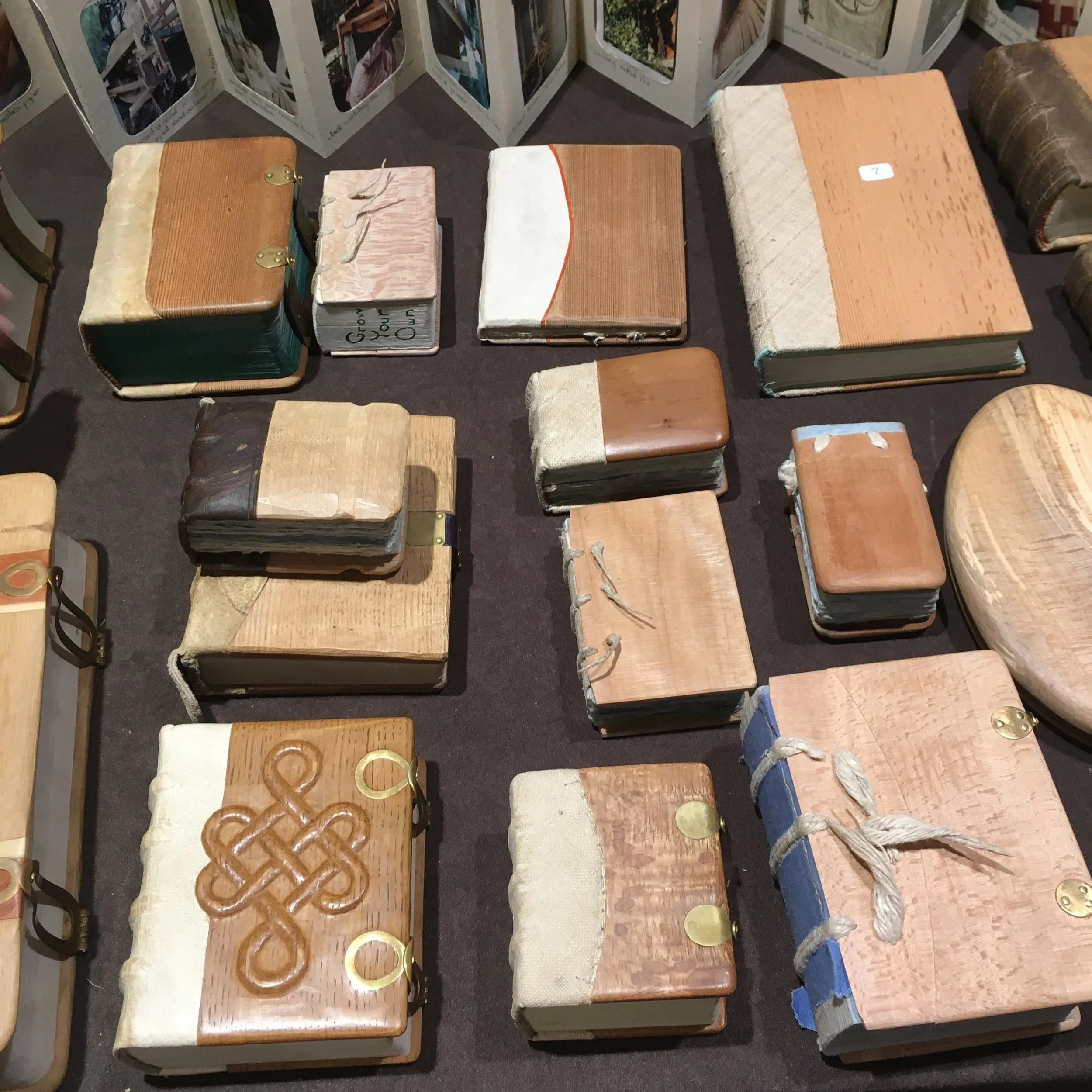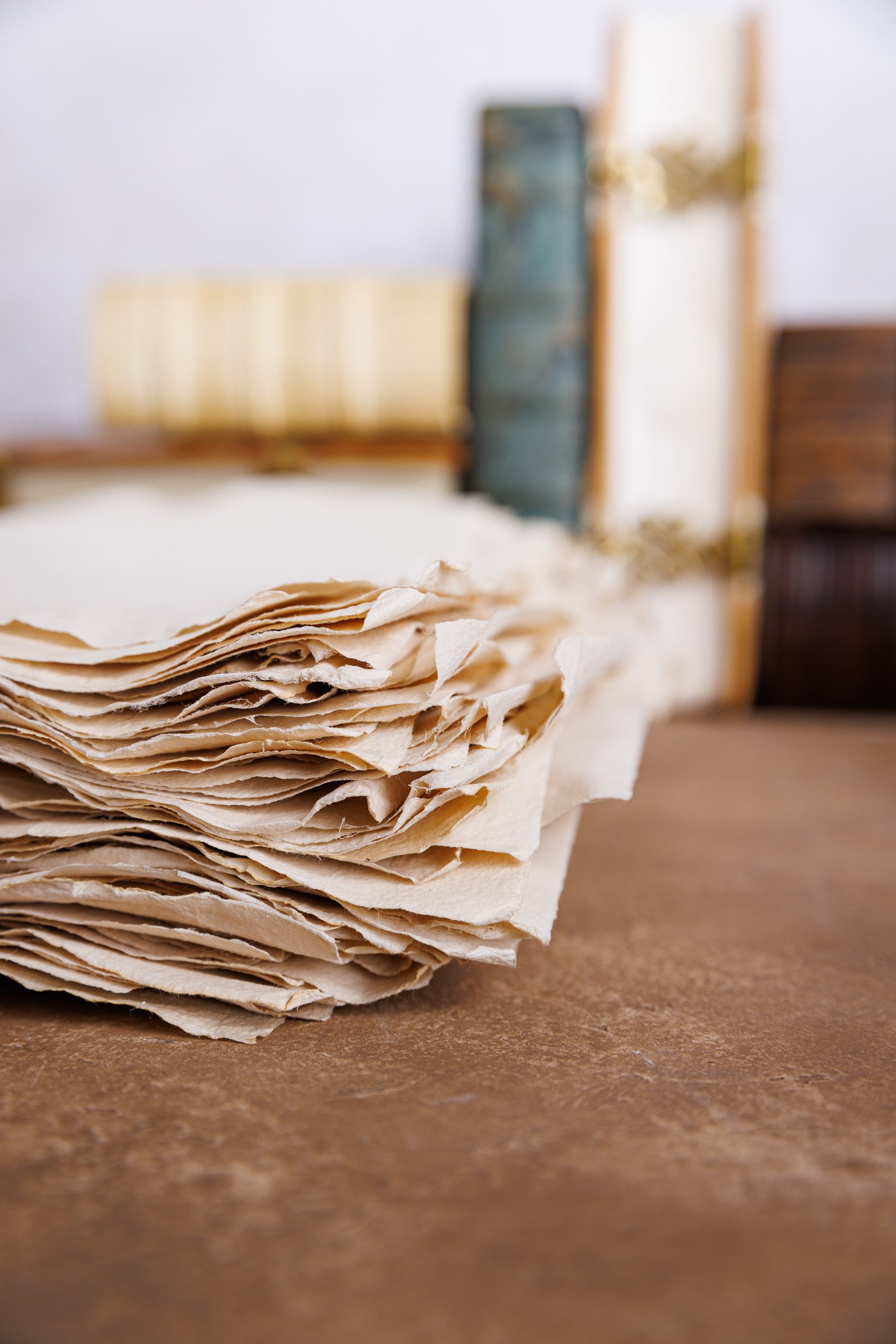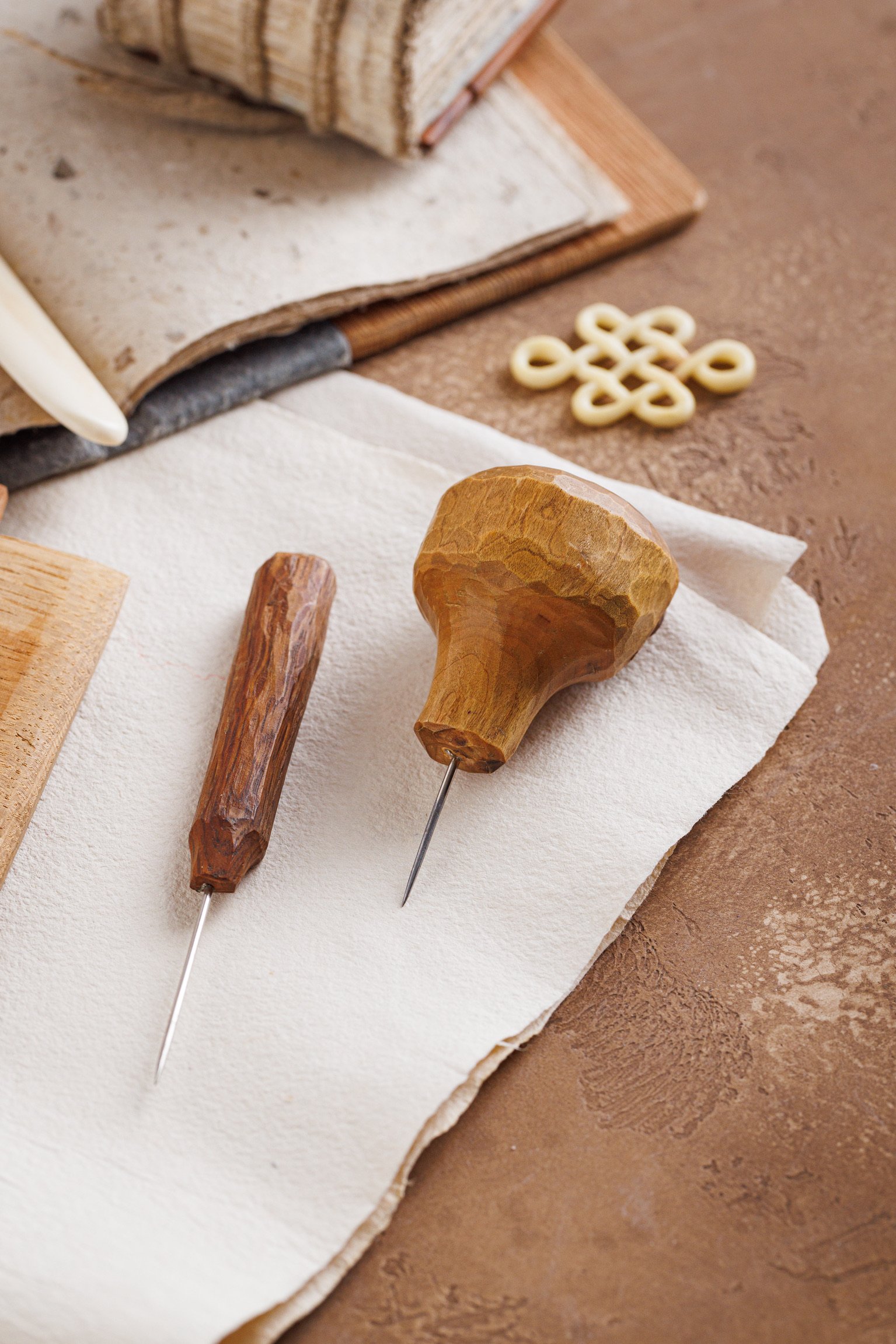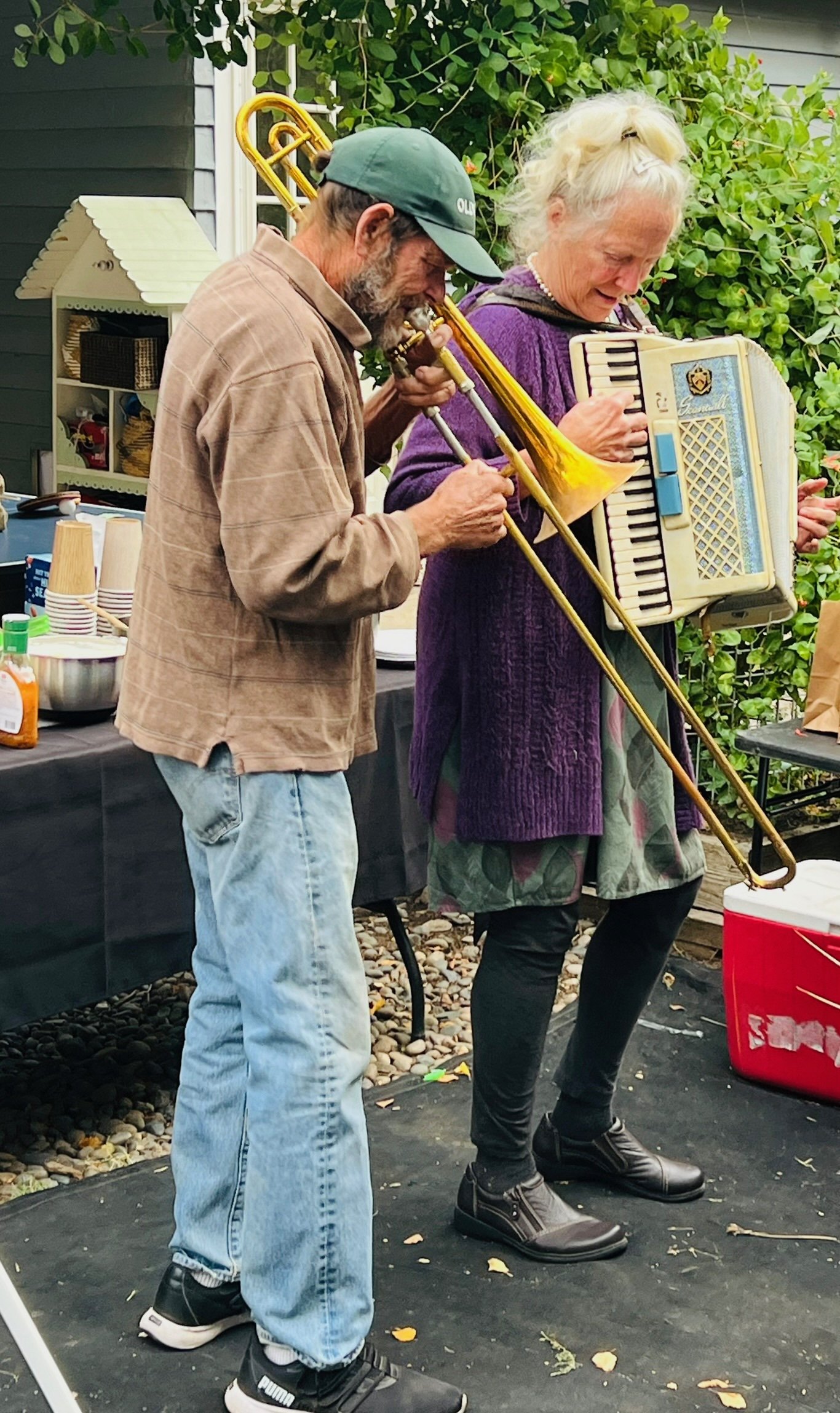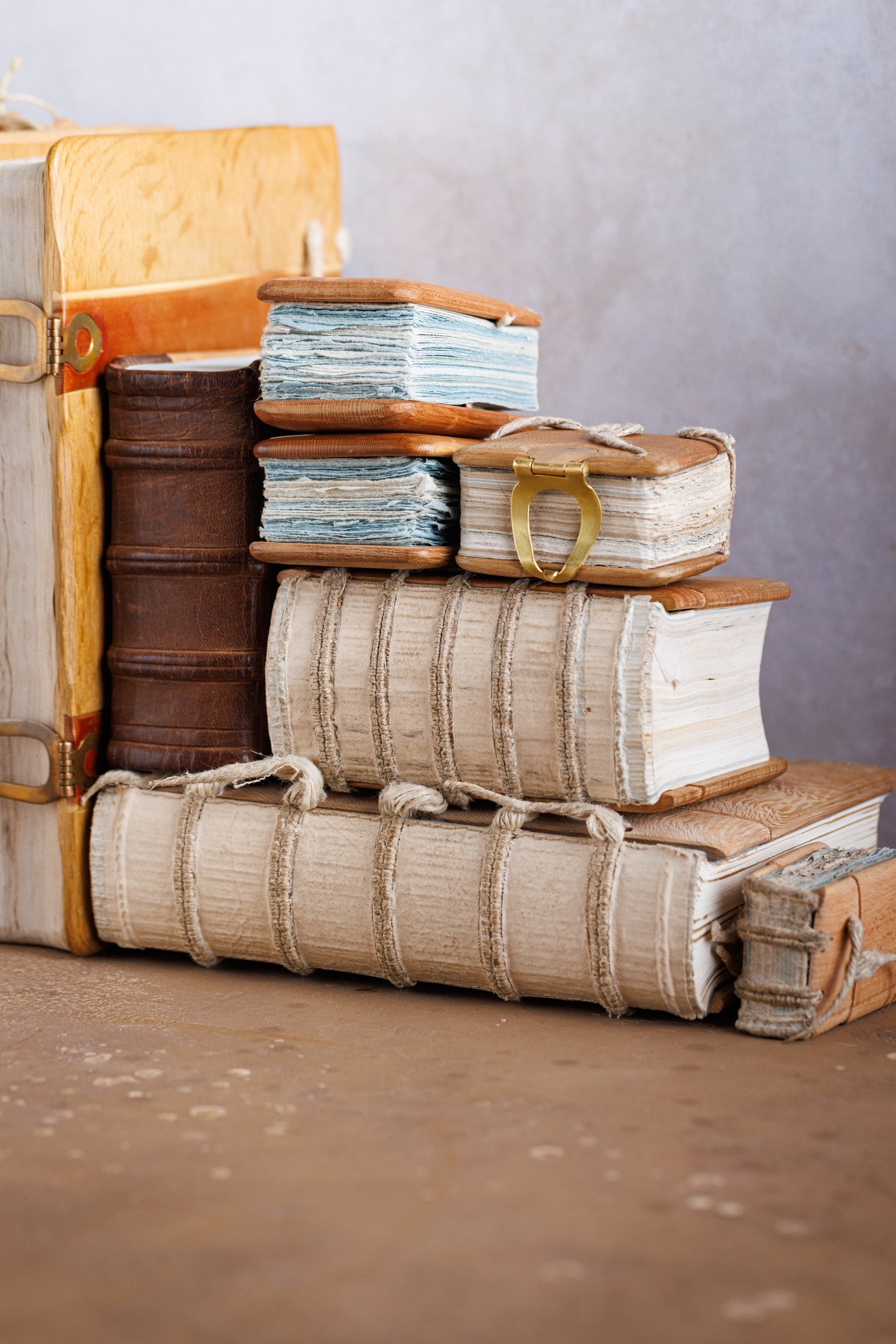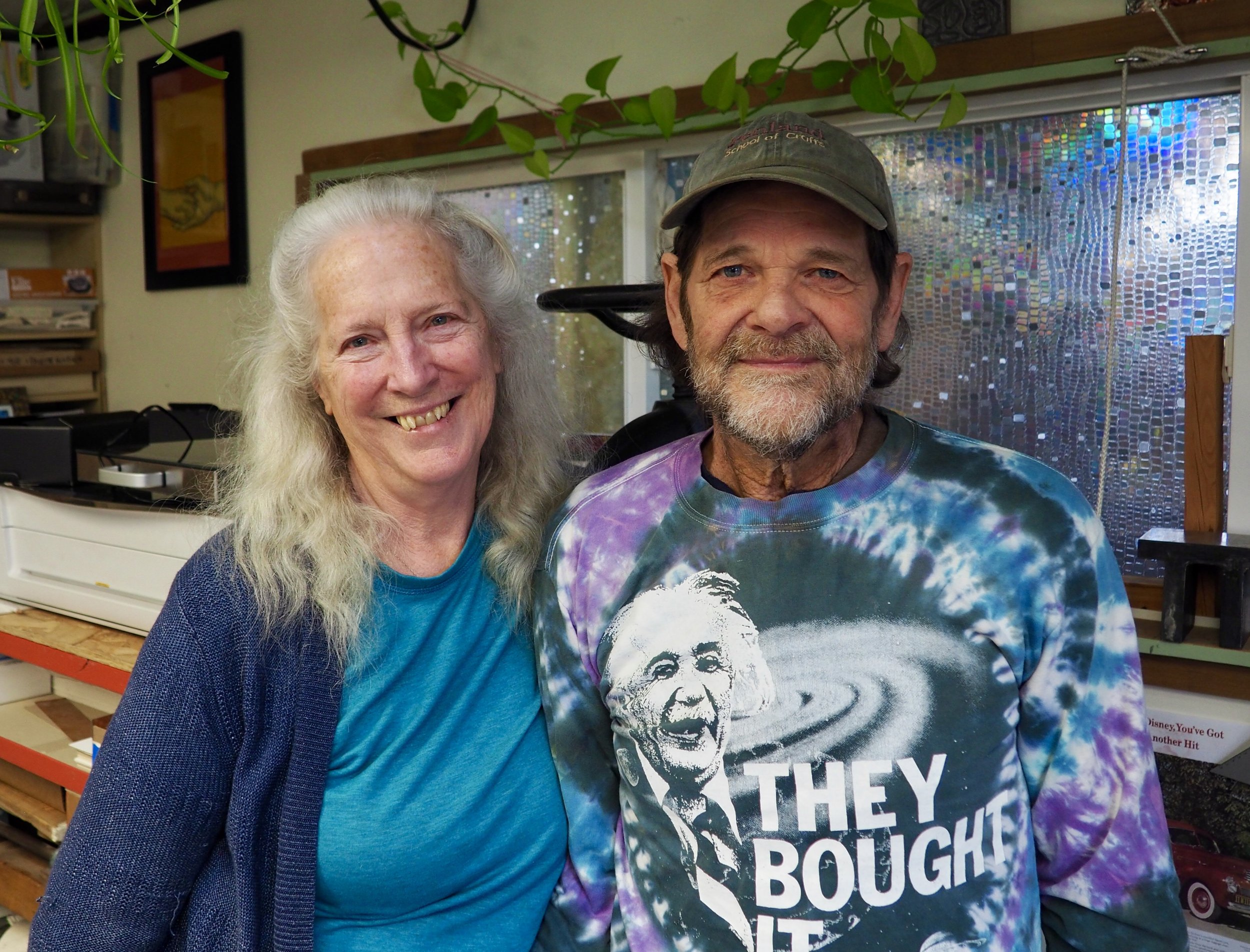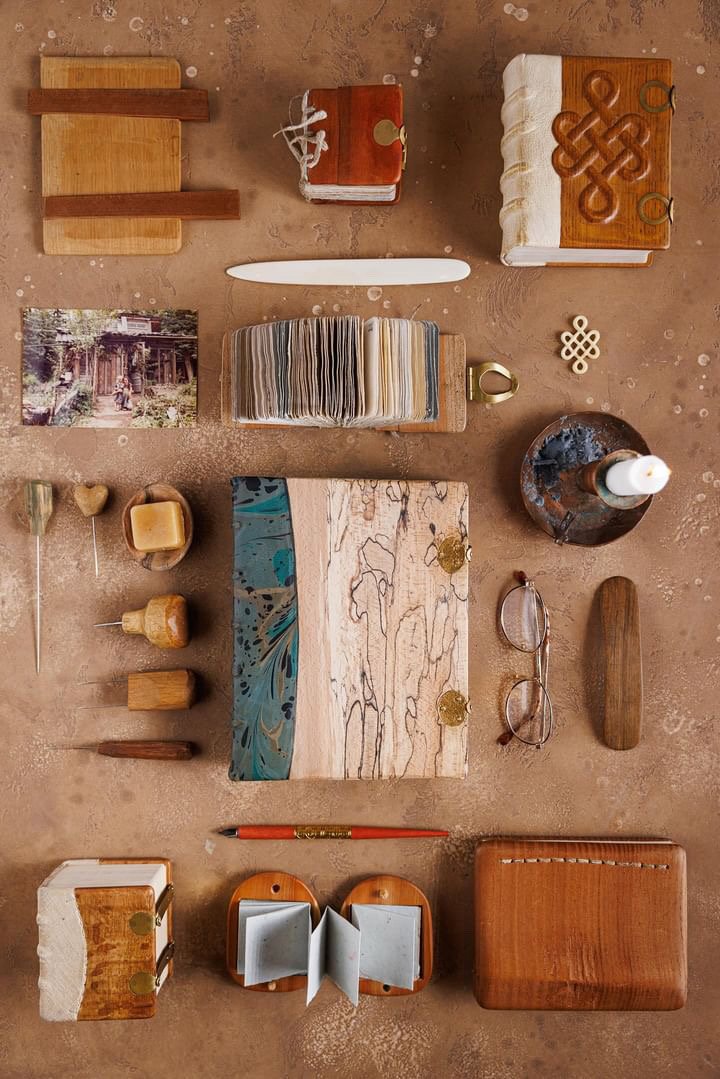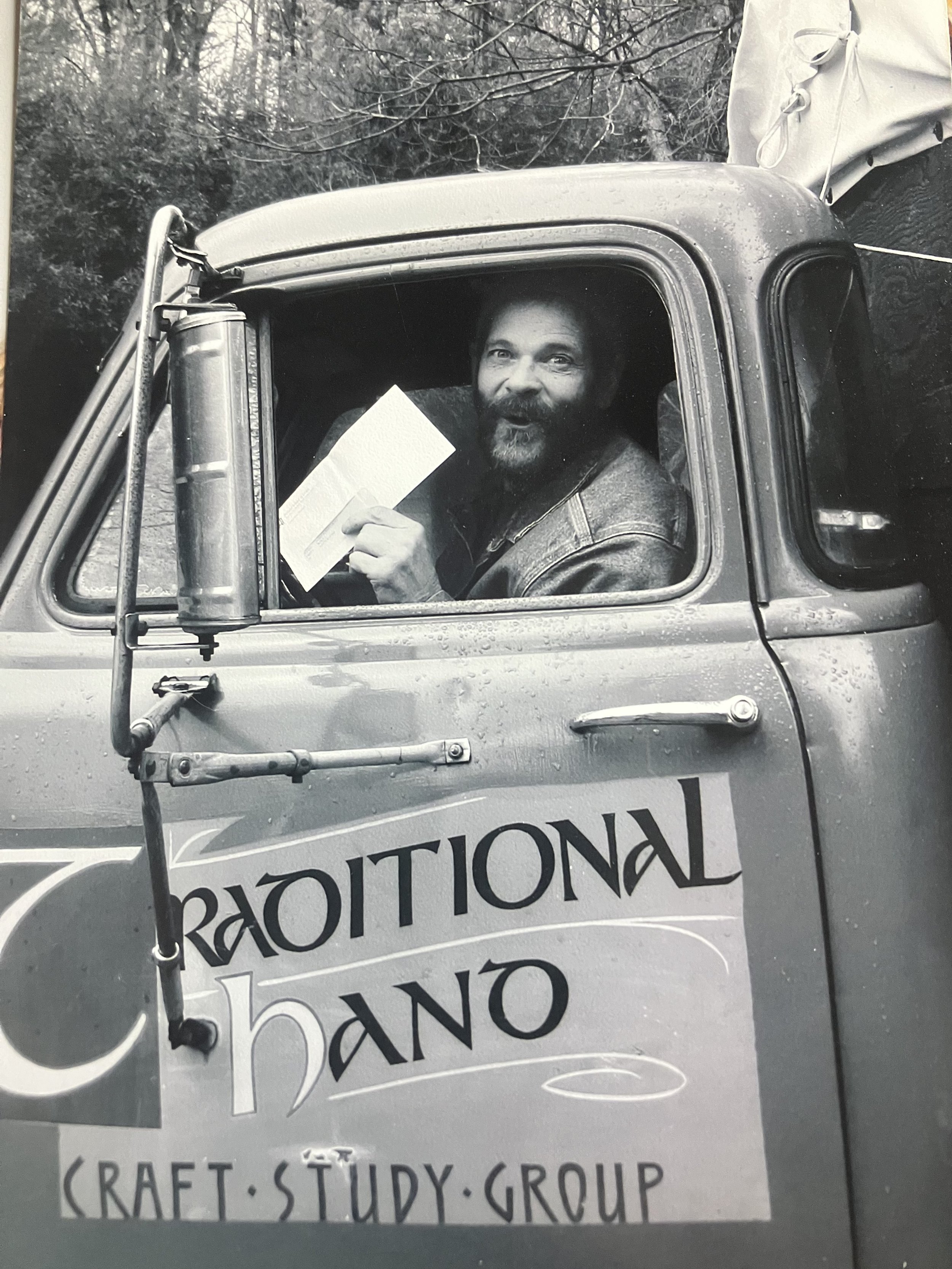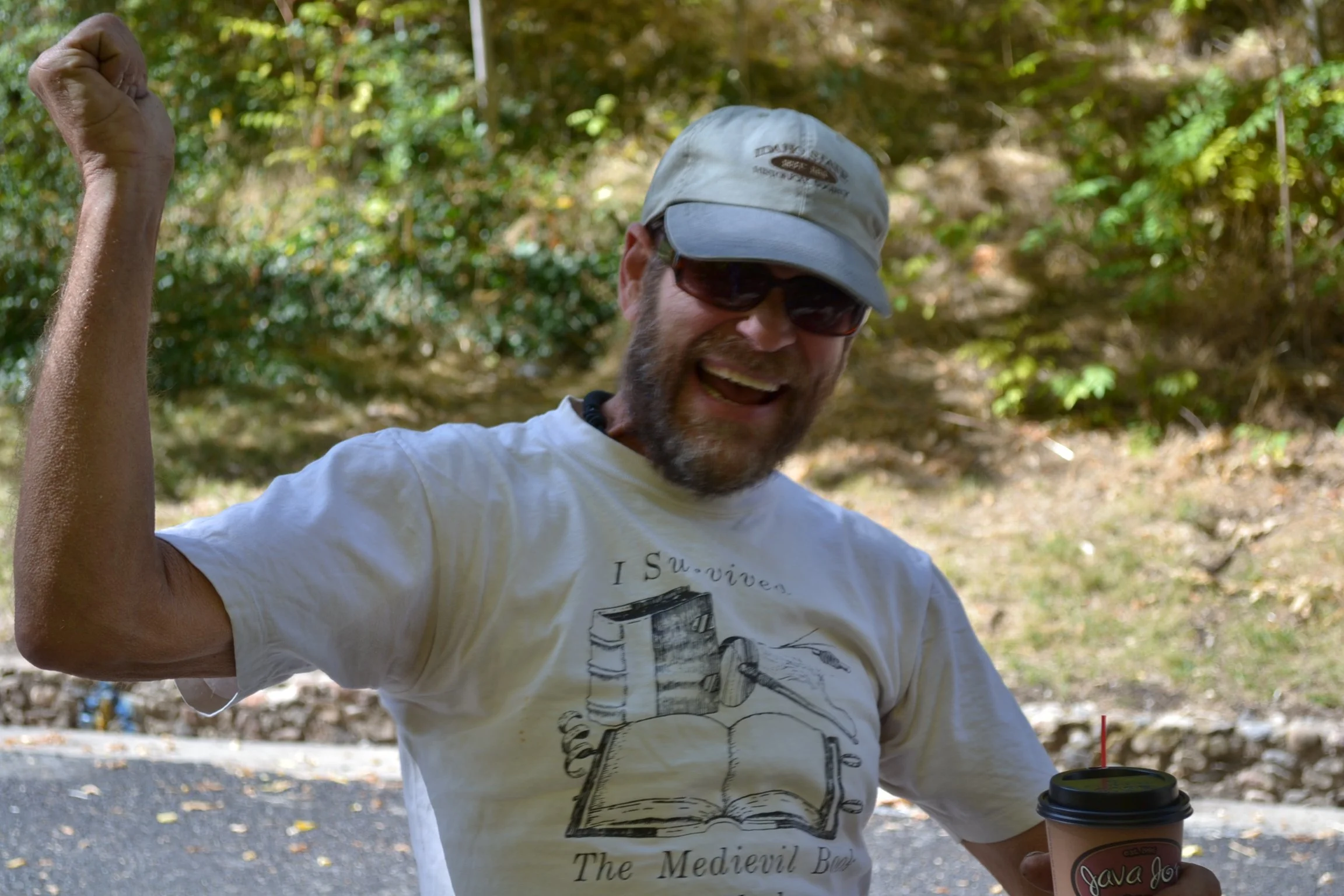Jim Croft is a medieval-inspired bookbinder and papermaker who has spent his life learning and teaching the 'old ways' of making books, tools, and a living from the land. Jim cultivates, salvages, and processes raw materials into highly refined, stunning bindings that reflect his connection to the natural world. However, his work is not just about creating beautiful books; it's also about inspiring others to appreciate and experience where materials come from while having fun in the process.
After graduating from Texas Christian University with a history degree in 1969, Jim got a job working on a transatlantic passenger ship and eventually disembarked in Barcelona. While exploring Europe via kayak and bike, Jim saw the intricate carpet pages of the Lindisfarne Gospels in the British Library (then still part of the British Museum), and Jim's passion for medieval craft was ignited.* While initially planning to study anthropology, he found greater fulfillment working with his hands, and in 1972 he moved to an 1870s cabin in Oregon for $20/month. There, Jim began his "back-to-the-land" journey, honing his hand skills while learning to bind books and live off-grid, relying solely on hand tools and knowledge gleaned from any manuals he could get his hands on.**
At a fated Eugene Country Fair in 1975, Jim met Melody Eckroth, a skilled basket weaver and musician. Their shared passion for traditional crafts and living close to the land led them to northern Idaho in 1977. They settled on five acres, built their home, and raised their three children, Liana, Nara, and Geo.
In 1987, Jim and Melody began hosting the “Technology of the Medieval Book” workshop in collaboration with Portland-based book conservator Jack Thompson. In this workshop, students learned to make a medieval book structure in an immersive, rustic setting. This collaboration also resulted in the construction of a paper stamp mill based on medieval design – the only operational North American stamp mill of the 20th century.***
Since 1998, “Technology of the Medieval Book” has continued on with Jim as the sole instructor under the new moniker “Old Ways”. At Old Ways, students come from around the world to learn how to use hand tools to process the raw materials and tools required to make a medieval book: bone folders, awls, thread, paper, leather, wooden boards, and brass clasps. Then they learn how to assemble these components into authentic, 21st-century medieval bindings -- all in just two weeks, fueled by wood-stove cooking, fresh air, and Jim's enthusiasm for all of it. Not only do they leave with beautiful books and tools, but also with a deeper understanding of quality materials and a renewed connection to the natural world.
Jim's life and work are a testament to the enduring power of traditional crafts and the importance of preserving the knowledge of the past. He is a master craftsman, a generous teacher, and a storyteller who weaves together the threads of history, craft, and sustainable living. When Jim isn't making books, he can be found chopping firewood, playing table tennis, watching tennis championship reruns, or jamming on the trombone.
asdf __________________________
Jim’s Additions and Asides
*Beginning in Spain, Jim traveled though France, Germany, and the Netherlands. He visited his brother Don in the army who had built a ‘kayak’ to escape to Sweden, a country that encouraged American Vietnam War deserters. However, before deserting his brother received a general discharge, so instead Jim took the kayak, traveling 500 miles to the North Sea (coincidentally, while dragging the kayak from one lock to another on the Rhine River in Germany, Jim got a hernia that eventually earned him a draft deferment for the War), bought a bike in the Netherlands and eventually winded up in England where he went to the British Museum every day for a month. When he saw the carpet pages on the Lindisfarne Gospel, his hair stood on end (raised his hackles) and he thought I want to make things that last – a theme in European artifacts that set him on his course.
**For the first year or so, he studied Aldren Watson’s (the illustrator of Bernard Middleton’s classic The Restoration of Leather Bindings) book Hand Bookbinding, making all the tools in the last chapter. He then traded a binding for a copy of Edith Diehl’s Bookbinding: Its Background and Technique, and he also purchased Lawrence Town’s Hand Bookbinding from Talas. In Jim’s words, “while some say it’s impossible, being self-taught from books results in some very good questions to ask other binders who were always welcoming and generous.”
*** The mill’s design and construction were overseen by Jack Thompson


